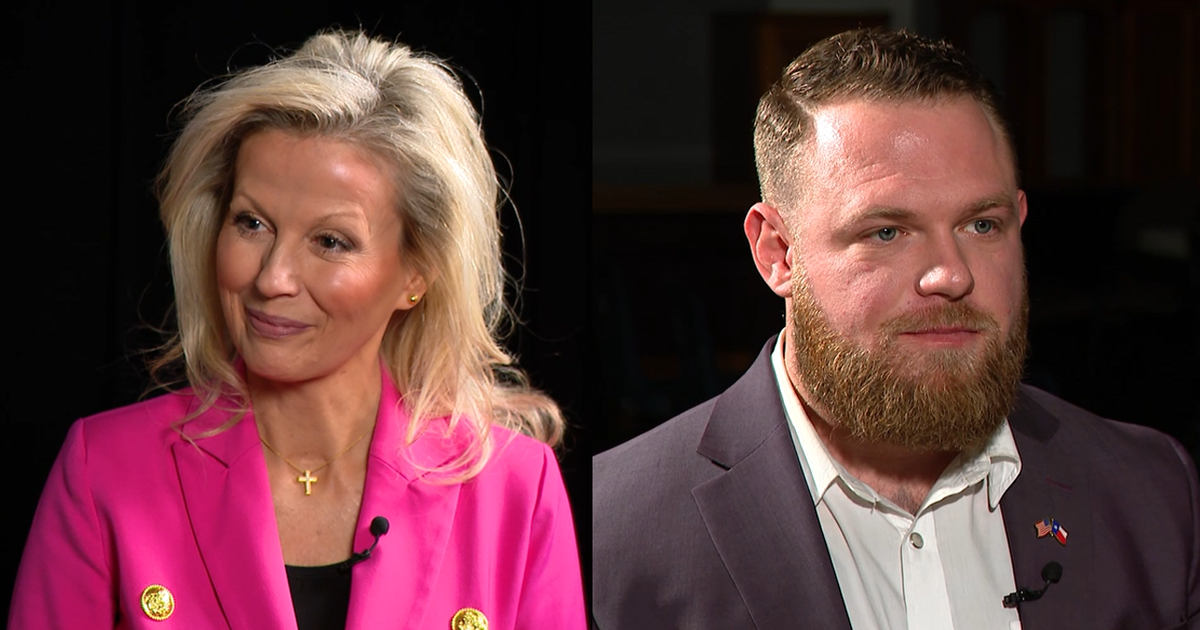5 things to know about CBS News' 2024 Battleground Tracker election poll analysis
The CBS News Battleground Tracker is back, explaining what's on voters' minds and regularly providing detailed snapshots of the U.S. presidential election in each state throughout the 2024 campaign. In addition to the specific polls we conduct in key states in a given week, the Battleground Tracker map includes our best estimates and presidential race ratings in every state. This includes states we've polled extensively and states where we've surveyed fewer voters but have lots of other data. Scroll down to the end to see CBS News' latest battleground state estimates (you can also hover over the map to see estimates).
What exactly is the Battleground Tracker, and where do the numbers come from? Here are five things to know.
1. Going state by state to understand this election
We take a state-by-state approach to describing the race and measuring public opinion, since the presidency is won in the Electoral College, not by the national popular vote. Indeed, relying too much on national polling can be misleading, as 2016 reminded us.
The Battleground Tracker looks at each individual state, focusing on the most competitive ones. And we translate each candidate's current support to the electoral vote scoreboard. Our state-by-state approach also gives a sense of what voters in different parts of the country think and feel about this year's candidates, national issues and local matters.
2. More than just a poll
While surveying voters across the country is an integral part of the Battleground Tracker, this is more than your typical poll. It's really a big data project. We combine polling, voter files from L2 Data (L2 is the firm used by CBS News for voter files), U.S. Census data, and historical trends to get a clear picture of what's going on in each state.
Here's what the data tells us:
- We know which candidates different types of voters are supporting from our polling, which includes much larger sample sizes — tens of thousands — than a typical poll;
- We know how many people like them are in each state and county, as well as their turnout history, from voter files and U.S. Census data;
- And we know each state's previous election results, which enables us to anchor our 2024 estimates to recent history.
Our model combines all this data using multilevel regression with post-stratification (scroll down for more details on this). A feature of this technique is that we use trends across the country to inform our picture of a specific state. If we find Hispanic voters across the Southwest shifting support, for instance, we use the information to more precisely estimate specific states in which Hispanic voters live. The same applies for many other types of voters. The survey lets them tell us what they are thinking, and we map that to how many of them live in each state.
We collaborate on data collection and modeling with global opinion research firm YouGov, building on our successful efforts in 2018, 2020, and 2022.
3. Think snapshots, not forecasts
We tell you where races stand today, explaining why and what might change. We fully anticipate movement before the first vote is cast, so we'll update everything regularly in the months ahead.
Unlike an electoral forecast, we're estimating each candidate's current support, incorporating all the data we've collected up to this point. For instance, if we estimate President Biden at 49% in a state with a margin of error of 3 points, we're confident that his support there is between 46% and 52% today — not that the final result will be in that range.
There's nothing here to account for forward-looking uncertainty — nothing about the economy changing or dramatic debates, for example. We fully expect movement before the first vote is cast, so we'll update everything regularly throughout the fall. A race that's leaning toward a party today could be reclassified as a toss-up if it becomes more competitive.
4. Electoral scenarios
That brings us to scenarios. Down the road, the Battleground Tracker will offer plausible scenarios for how the election might unfold. We'll do this using a combination of statistical simulation and by tweaking some of the assumptions underlying our model, resulting in a range of possible outcomes.
Here's an example. One of the most challenging things to figure out will be turnout: who's actually going to bother to vote? Modeling who is likely to vote is a perennial challenge that is sensitive to assumptions.
In our baseline model, we estimate which voters are casting ballots based on both what they tell us they're planning to do and historical patterns in their states. In our scenarios, we'll slightly alter the model's parameters to explore what could happen if, for example, large swaths of voters stay home (perhaps for fear of getting sick) or if there's a surge in voting by mail (also possible given intense interest in this election). We'll roll out our scenarios later in the campaign, so check back for them!
5. Models have solid track record
While we take a different approach than traditional polling, the Battleground Tracker is based on rigorous methods from the fields of political science, survey research, and statistics. Moreover, we have a strong track record employing similar models at CBS News over the past few years.
Our 2018 model performed particularly well, steadily tracking Democrats' improvement in key races and the eventual blue wave in the U.S. House. In fact, our high-turnout scenario accurately estimated the final seat breakdown, when it came to pass that historic turnout powered Democratic gains.
Our accurate race ratings in 2020 were based on a similar model. We estimated that Democrats had built a lead heading into Election Day, but that Republicans could catch up with a late turnout surge. Every state we classified as leaning Democratic wound up going to Mr. Biden, and each we rated as leaning Republican went to Trump. Of our six toss ups, Trump won four and Mr. Biden won two.
And most recently, this methodology enabled us to accurately estimate the 2022 midterm elections. Our model consistently pointed to narrow Republican gains in the House, rather than the red wave that many other analysts expected.
More on the statistical model we use
If you want to know more about the data and statistical model we use — and don't mind a bit of jargon — then keep reading...
First, we survey thousands of registered voters across the country and make sure to draw larger samples in battleground states, which we expect to be more competitive. The most important survey questions we ask for estimation purposes are how likely they are to vote and which candidate they would vote for today.
We then determine how people's vote intentions are related to their characteristics like age, gender, race, education, past vote, where they live, and so on. Each voter has a certain combination, which we'll call a "profile" for shorthand. For example, one possible profile is a 45-year-old, Asian female, who holds a college degree, voted for Biden four years ago, and lives in Allegheny County, Pennsylvania. Change any one of these characteristics and you get a different profile. We run a multilevel regression — a way to model the relationship between different variables — on the survey data to estimate how many voters of each specific profile intend to vote for each major candidate. The regression includes the voter characteristics above, as well as state and district effects (the levels in "multilevel").
The next step is estimating how many people of each voter profile live in each state. For this we use a combination of U.S. census data and voter files, which includes counts of voters at very granular levels, such as voting precincts. In each state, we multiply the total number of voters of a given profile by the proportion of voters with that profile choosing a candidate (the "post-stratification" step). Aggregating across all voter profiles in a state, we finally get the estimate of that candidate's statewide vote share. In Maine and Nebraska — the two states that award electoral votes by congressional district — we also estimate candidate support in each district.






